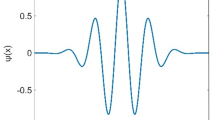Abstract
The paper presents an application of wave propagation for damage detection in an aluminum plate. The experimental investigation was conducted on an aluminum plate by generating the wave with Lead Zirconate Titanate (PZT) patches by function generator. Normal responses are measured with the Scanning Laser Doppler Vibrometer (SLDV). Eleven sine cycles modulated by hanning window with frequency of 5 kHz have been used as an excitation signal. Recorded signals were analyzed using the signal processing techniques developed for damage detection. The time signals recorded during measurement have been utilized to calculate the values of root mean square (RMS) response. It has turned out that the values of RMS differed significantly in damaged areas from the values calculated for the healthy ones. It is thus become possible to identify precisely the locations of damage over the entire measured surface. The magnitude of propagating wave decreases with travelled distance from the excitation point. This effect produces larger values of RMS near the excitation. To equalize RMS function in whole area time samples are multiplied by a weighting factor called weighted RMS function. The obtained results are presented in the form of scatter plots and numerical contour maps. It may be concluded that the proposed approach enables damage localization in a relatively fast and precise manner.
Access this chapter
Tax calculation will be finalised at checkout
Purchases are for personal use only
Similar content being viewed by others
References
Dawson B (1976) Vibration condition monitoring techniques for rotating machinery. The shock and vibration digest, vol 8(12). Springer, London, p 3
Giurgiutiu V (2008) Structural health monitoring with piezoelectric wafer active sensors. Elsevier, London
Inman DJ, Farrar CR, Lopes V Jr, Steffen V Jr (2005) Damage prognosis for aerospace, civil and mechanical systems. Wiley, West Sussex
Structural Health Monitoring (2011) Proceedings of the 8th international workshop on structural health monitoring 2011, Stanford
Rucka M (2010) Experimental and numerical studies of guided wave damage detection in bars with structural discontinuities. Arch Appl Mech 80:1371–1390
Doyle JF (1997) Wave propagation in structures: spectral analysis using fast discrete Fourier transforms, 2nd edn. Springer, New York
Staszewski WJ, Boller C, Tomlinson GR (2004) Health monitoring of aerospace structures. Wiley, West Sussex
Radzienski M, Dolinski L, Krawczuk M, Zak A, Ostachowicz W (2011) Application of RMS for damage detection by guided elastic waves. J Phys Conf Ser 305:012085
Staszewski WJ, Lee BC, Mallet L, Scarpa F (2004) Structural health monitoring using scanning laser vibrometry: I. Lamb wave sensing. Smart Mater Struct 13:251–260
Mallet L, Lee BC, Staszewski WJ, Scarpa F (2004) Structural health monitoring using scanning laser vibrometry: II. Lamb waves for damage detection. Smart Mater Struct 13:261–269
Leong WH, Staszewski WJ, Lee BC, Scarpa F (2005) Structural health monitoring using scanning laser vibrometry: III. Lamb waves for fatigue crack detection. Smart Mater Struct 14:1387–1395
Radzienski M, Ostachowicz W (2011) Experimental studies of structure inspection. In: Structural health monitoring. Trans Tech Publications, Stanford, pp 2245–2251
Zak A, Radzienski M, Krawczuk M, Ostachowicz W (2012) Damage detection strategies based on propagation of guided elastic waves. Smart Mater Struct 21:18
Radzieńskib M, Dolińskia L, Krawczuka M, Palacza M (2013) Damage localization in a stiffened plate structure using a propagating wave. Mech Syst Signal Process 39(1–2):388–395
Acknowledgments
The paper is published with the approval of Director, CSIR-SERC. The author is grateful to Dr. Bala Pesala for all his help and support. Also, the support provided by the Head and all the technical staffs of Advanced Seismic Testing and Research (ASTaR) Laboratory and Tower Testing and Research Station (TT&RS), CSIR-SERC is gratefully acknowledged.
Author information
Authors and Affiliations
Corresponding author
Editor information
Editors and Affiliations
Rights and permissions
Copyright information
© 2015 Springer India
About this paper
Cite this paper
Jothi Saravanan, T., Hari, K., Prasad Rao, N., Gopalakrishnan, N. (2015). Damage Detection in Structural Elements Through Wave Propagation Using Weighted RMS. In: Matsagar, V. (eds) Advances in Structural Engineering. Springer, New Delhi. https://doi.org/10.1007/978-81-322-2187-6_199
Download citation
DOI: https://doi.org/10.1007/978-81-322-2187-6_199
Publisher Name: Springer, New Delhi
Print ISBN: 978-81-322-2186-9
Online ISBN: 978-81-322-2187-6
eBook Packages: EngineeringEngineering (R0)




